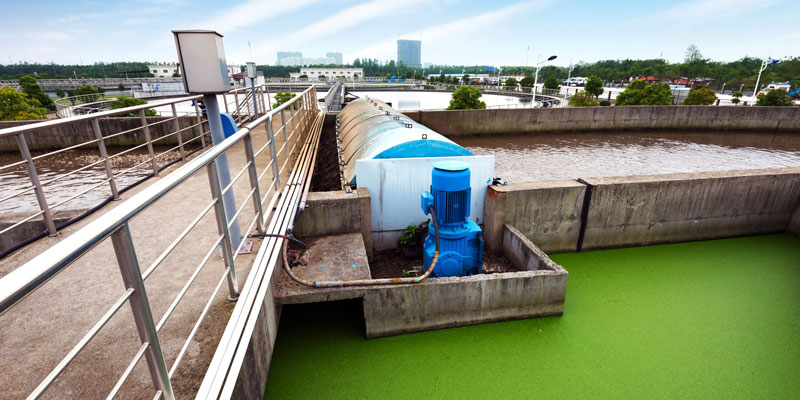Assessing the Risk from Microbial Contaminants within the Two-year Wellhead Protection Area of a Municipal Well Field in an Agricultural Setting
Principal Investigator - David Rudolph, Professor, University of Waterloo (2007-2010)

Challenge
In Ontario, groundwater contributes between 30% and 40% of the drinking water supply. In some communities, between 80% and 90% of the supply is extracted from local aquifers. Some of these groundwater supplies have been negatively affected by compromised groundwater quality, the most publicized example being the Walkerton, Ontario Escherichia coli and Campylobacter outbreak in 2001. This event raised many questions concerning the safety of potable water resources previously thought to be secure.
Long term protection and sustainability of groundwater resources requires the management of potential water quality risks. Microbiological risks represent a significant threat to community drinking water supplies, yet they remain poorly understood. One issue of particular concern has been the potential for microbial contamination of groundwater supplies via agricultural land use practices. Currently, there is a lack of scientific information available for legislators and policy analysts to develop regulatory guidelines designed to reduce this type of contamination. Thus, the overall objective of this project was to enhance the understanding of conditions that control the occurrence and mobility of microbes in regional groundwater systems by conducting detailed spatial and temporal monitoring of selected indicator species near a vulnerable municipal groundwater supply system.
Project
Thornton Well Field, near Woodstock, Ontario, has experienced chronically high levels of nitrate, a legacy of nutrient management from nearby agricultural lands. Over the course of a 20-month period, a network of groundwater monitoring wells in the vicinity of the well field was selected for detailed spatial and temporal monitoring. An integrated data set was collected from the field site, which included climatic information, temperature information, and groundwater level, along with water samples from the monitoring well network, tile outfalls, surface waters and municipal water wells. Water samples were analyzed for nitrate and chloride concentrations, as well as three water quality indicator bacteria – Escherichia coli, Total coli forms, and aerobic endospores – chosen to evaluate the occurrence of bacterial contaminants.
Monitoring over the course of an annual cycle revealed that the highest microbial concentrations tend to be associated with significant groundwater recharge events, which occur during snowmelt periods. The high source concentrations and rapid recharge rates associated with these events resulted in periods of high microbial loading to the groundwater system, increasing the risk of contamination. Microbial monitoring revealed a time-lagged influence of these short-lived extreme events. Yet, despite highly vulnerable conditions, the occurrence of the contaminants in the municipal water supply was relatively rare, which suggests that natural processes in the subsurface may be effective at reducing the risk of contamination.
Outputs
- The results of this work were communicated to municipal and provincial authorities for use in the development of Source Water Protection legislation, specifically to evaluate the vulnerability of municipal groundwater supplies to microbial contaminants and possible risk reduction measures.
- There have been several opportunities to share results from the project with a scientific audience through consortium project meetings and conference calls.
- Presentations on the results from this project were also made at technical meetings including the 2009 Spring American Geophysical Union meeting in Toronto, the 2009 Canadian Association on Water Quality meeting in Burlington and the Pathogens in Groundwater Conference.
Publications
Christie, M., Rudolph, D.L., Payment, P., and Locas, A. “Monitoring the Occurrence of Microbial Contaminants within the Wellhead Protection Area of a Municipal Well Field in an Agricultural Setting.” Microbial Transport and Survival in the Subsurface. 1st International Conference, May 10-13, 2009, Niagara-on-the-Lake, Ontario, Canada.
Christie, M., Rudolph, D.L., Payment, P., and Locas, A. “Assessing the risk of microbial contaminant occurrence within the wellhead protection area of a municipal well field in an agricultural setting.” 44th Central Canadian Symposium on Water Quality Research, Canadian Association on Water Quality, February 23-24 2009, Burlington, ON, Canada.
Rudolph, D.L. “Influence of Extreme Hydrologic Events on the Occurrence of Microbial Species in Regional Groundwater Systems.” Eos Trans. AGU, 90(22), Joint Assembly, Suppl., Abstract IA23B-01. AGU Joint Assembly Toronto, Ontario, Canada, May 24- 27, 2009.
Sousa, M. R., Rudolph D. L. and Thomson N.R. “Assessment of the Potential Impact of Beneficial Management Practices: Case study in the Thornton Well Field, Woodstock, ON.” 44th Central Canadian Symposium on Water Quality Research, Canadian Association on Water Quality, February 23-24, 2009, Burlington, ON, Canada.
Rudolph, D. L., Thomson, N. and Conant Jr., B. “Quantifying Effectiveness of Nutrient Land Application Options within Regional Aquifer Systems and Municipal Wellhead Protection Areas.” Final Report, Ontario Ministry of the Environment, Nutrient Management Joint Research Program, March 2009.
Sousa, M. R., Rudolph D. L., Thomson N. R. and Conant Jr., B. “Predicting Effects of Agricultural Beneficial Management Practices on Water Supply Wells Using Numerical Modeling.” GeoHalifax 2009 – 62nd Canadian Geotechnical Conference & 10th Joint CGS/IAH-CNC Groundwater Conference. September 20-24, 2009, Halifax, NS, Canada.
Christie, M. “Monitoring the Occurrence of Microbes within a Well Head Protection Area in an Agricultural Setting.” M. Sc. Thesis, University of Waterloo (in final preparation).
Outcomes
Thornton Well Field is a significant part of a detailed Source Water Protection Plan developed by Oxford County and the Upper Thames River Conservation Authority. The field site is a valuable case study for similar areas across Ontario and Canada. Considering the potential threat pathogens pose to drinking water supplies, this study was critical in further developing the concept of Source Water Protection.
- By properly accounting for the natural ability of the subsurface to reduce microbial concentrations, municipal and provincial authorities will be able to develop more effective Source Water Protection Plans. In many cases, this will result in more efficient land management strategies, which will have a positive impact for farm operators and the agricultural industry as a whole.
- Results from the project also have additional practical implications. Incorporating the influence of climatic and hydrologic variability will help researchers develop an approach to test Significant Groundwater Recharge Areas (SGRA) for vulnerability to microbial contaminants. Recognizing the transient, event-based nature of microbial contamination will help focus future field assessments, and suggest what data sets might be required.
- Changes in practice as the results will influence the development of Beneficial Management Practices and land management strategies designed to reduce the risk of pathogen contamination.




